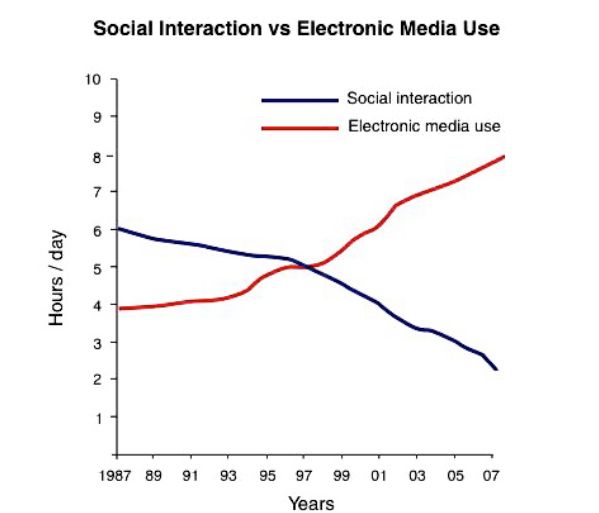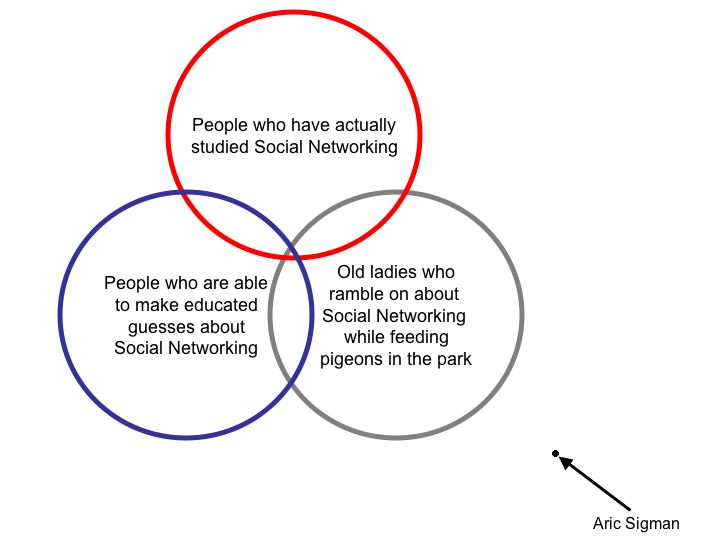By Antonio A. Casilli (Centre Edgar-Morin, EHESS, Paris)
In a recent lecture at the University Paris Descartes I had mentioned an article published in The Biologist by Aric Sigman, Fellow of the English Royal Society for Medicine, claiming that intensive use of social networking is linked to biological changes in humans: genetic alterations, increased morbidity/mortality for cardiovascular disease, and decreasing survival time for cancer patients. It’s the infamous “Facebook gives cancer” argument, that has caused quite a stir in the UK. The article, that you have here in pdf version, provides a clear illustration of what I described elsewhere as “the dialectic between the stethoscope and the mouse” – i.e. the ambivalent relationship between contemporary biomedicine and digital culture (Casilli, 2009).
In his always amazing Bad Science blog, Ben Goldacre has already bashed the article to a pulp from a medical standpoint, showing that the underlying research is far from being scientifially robust – a medical euphemism mainly used to dismiss despicable bullshit.
From the sociological point of view, I am pretty astonished to discover that all of Sigman’s argument is based on one assumption: that the increase in social networking website usage automatically results into a decline of face-to-face contact which in turn equates to social withdrawal – which causes cancer. This graph, featured in the article, pretty much sums it up:

For the non-initiated, that basically reads: “The more you surf on the Web, the more you grow lonely and your friends and family turn their backs on you and in the end you DIE ALONE like a dog”.
Now, my reaction would be to embark in a long and tortuous explanation of how computer-mediated social interaction is in itself a social interaction which is complementary to – and not conflicting with – face-to-face communication (Golder et al., 2007). I could invite Sigman to update his literature review by suggesting that, despite some 1990s studies argued that Internet use leads to loneliness (Kraut et al., 1998), recent research have criticized those results (Amichai-Hamburger & Ben-Artzi, 2003) and pointed out that the fact of NOT using social networking websites could instead be linked to poor social integration (Hargittai, 2008). I may also maintain that social sciences have extensively explored the hypothesis that time spent online could have a negative impact on social activities, and didn’t find univocal evidence for this so-called “displacing effect” (Williams, 2007)
But I’m afraid such subtilties would bounce on Sigman’s thick skull. So I just decided to come up with a rudimentary and oversimplifying graph myself. Which goes like this:

Y Amichai-Hamburger & E Ben-Artzi (2003) Loneliness and Internet use. Computers in Human Behavior, 19: 71-80.
A A Casilli (2009) Le stéthoscope et la souris: savoirs médicaux et imaginaires numériques du corps. Esprit, 343: 175-188.
S Golder, D Wilkinson & B Huberman (2007) Rhythms of Social Interaction: Messaging within a Massive Online Network. In C Steinfield, B Pentland, M Ackerman & N Contractor (eds.) Proceedings of Third International Conference on Communities and Technologies. London, Springer: 41-66.
E Hargittai (2008) Whose space? Differences among users and non-users of social network sites. Journal of Computer-Mediated Communication, 13: 276-297.
R E Kraut, M Patterson, V Lundmark, S Kiesler, T Mukhopadhyay W Scherlis (1998) Internet paradox: A social technology that reduces social involvement and psychological well-being? American Psychologist, 53 (9): 1017-1032.
A Sigman (2009) Well Connected?: The Biological Implications of ‘Social Networking’. The Biologist, 56 (1): 14-20.
D Williams (2007) The impact of time online: Social capital and cyberbalkanization. CyberPsychology & Behavior, 10: 398-406.